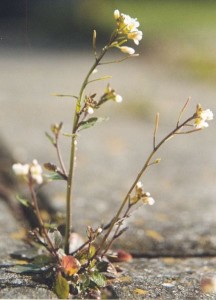THURSDAY, 3 JUNE 2010
The group of Detlef Weigel studied mouse ear cress (Arabidopsis thaliana), which grows in areas from North Africa to Scandinavia and from Central Asia to Western Europe. They tracked down a variant of the ACD6 gene, which functions as a universal weapon in the fight against predators. With it, the plants produce more of a chemical that is directly toxic to microbes and more signaling molecules important in immunity. However, this gene also slows down the production of leaves and limits the size of leaves, so that these plants are always smaller than those that do not have this variant. Smaller size eventually leads to reduced number of seeds and hence to fewer progeny.If they are attacked, the plants with the special ACD6 variant have a leg up compared to plants with the standard version. But at places or in years where there are few enemies, they are penalised and lose out compared to their larger fellow plants. The resistant variant is found in all areas where the mouse ear cress grows, but as a result of the disadvantage if confers, is only found in about 20 percent of individuals.
In the course of plant evolution, the dilemma of whether to invest into disease resistance or biomass seems to be dependent on the unpredictable circumstances a plant finds itself in. This explains why large, but vulnerable plants co-exist in nature with small, but well-protected ones.
Written by Nitika Somani

